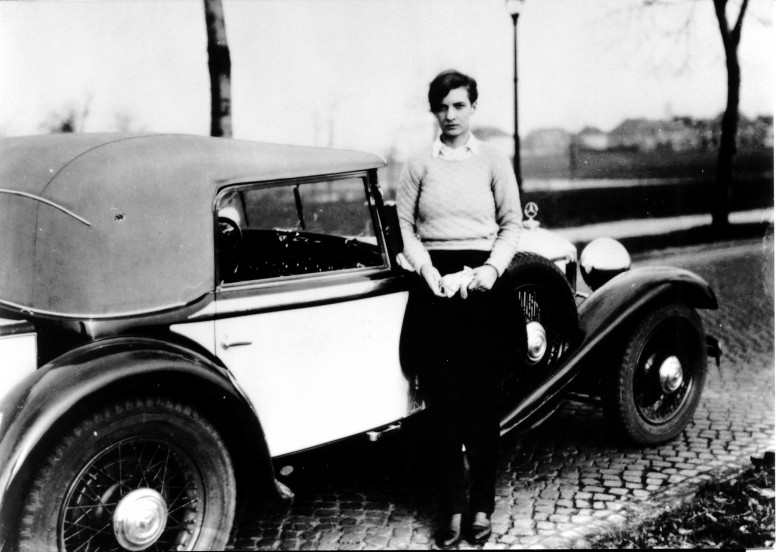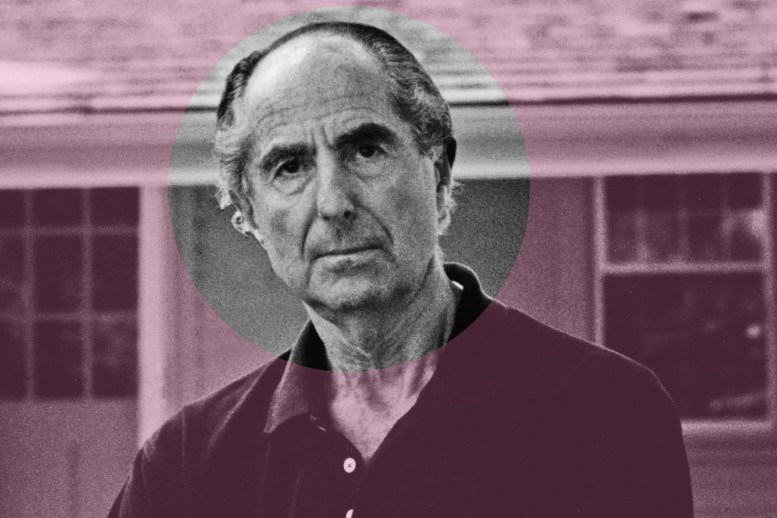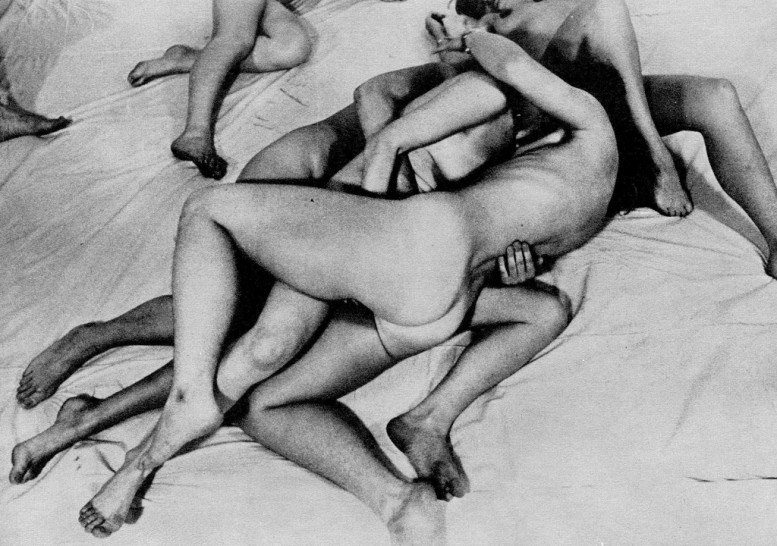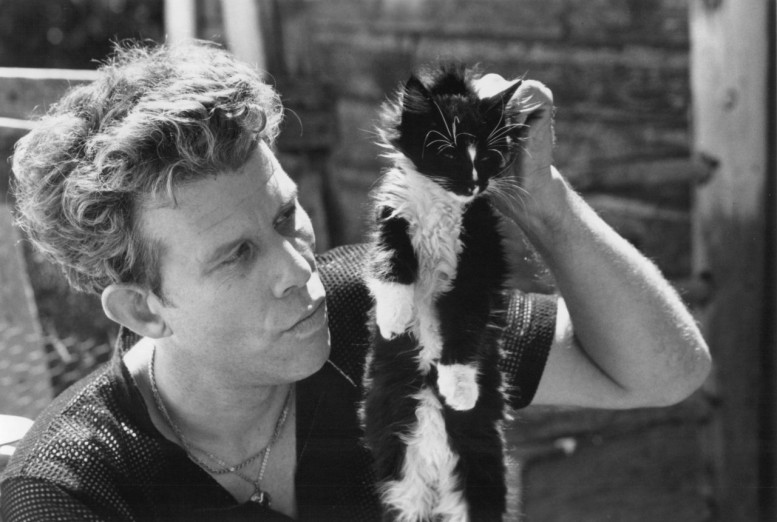[BOOKS] Journey Into The Abyss
Journey to the Abyss: The Diaries of Count Harry Kessler, 1880-1918, a collection of fascinating, never-before-published early diaries of Count Harry Kessler—patron, museum director, publisher, cultural critic, soldier, secret agent, and diplomat—present a sweeping panorama of the arts and politics of Belle Époque Europe, a glittering world poised to be changed irrevocably by the Great War. Kessler’s immersion in the new art and literature of Paris, London, and Berlin unfolds in the first part of the diaries. This refined world gives way to vivid descriptions of the horrific fighting on the Eastern and Western fronts of World War I, the intriguing private discussions among the German political and military elite about the progress of the war, as well as Kessler’s account of his role as a diplomat with a secret mission in Switzerland. The diaries present brilliant, sharply etched, and often richly comical descriptions of his encounters, conversations, and creative collaborations with some of the most celebrated people of his time: Otto von Bismarck, Paul von Hindenburg, Hugo von Hofmannsthal, Richard Strauss, Igor Stravinsky, Sergei Diaghilev, Vaslav Nijinsky, Isadora Duncan, Ruth St. Denis, Sarah Bernhardt, Friedrich Nietzsche, Rainer Marie Rilke, Paul Verlaine, Gordon Craig, George Bernard Shaw, Harley Granville-Barker, Max Klinger, Arnold Böcklin, Max Beckmann, Aristide Maillol, Auguste Rodin, Edgar Degas, Éduard Vuillard, Claude Monet, Edvard Munch, Ida Rubinstein, Gabriele D’Annunzio, Pierre Bonnard, and Walther Rathenau, among others. Remarkably insightful, poignant, and cinematic in their scope, Kessler’s diaries are an invaluable record of one of the most volatile and seminal moments in modern Western history. You can purchase the book here.
[BOOKS] Fear and Loathing at Rolling Stone
A new book, to be released at the end of this month, collects of many of Hunter S. Thompson's articles published in RollIng Stone magazine. "Buy the ticket, take the ride," was a favorite slogan of Hunter S. Thompson, and it pretty much defined both his work and his life. Fear and Loathing at Rolling Stone showcases the roller-coaster of a career at the magazine that was his literary home. Jann S. Wenner, the outlaw journalist's friend and editor for nearly thirty-five years, has assembled articles that begin with Thompson's infamous run for sheriff of Aspen on the Freak Party ticket in 1970 and end with his final piece on the Bush-Kerry showdown of 2004. In between is Thompson's remarkable coverage of the 1972 presidential campaign—a miracle of journalism under pressure—and plenty of attention paid to Richard Nixon, his bÊte noire; encounters with Muhammad Ali, Bill Clinton, and the Super Bowl; and a lengthy excerpt from his acknowledged masterpiece, Fear and Loathing in Las Vegas. Woven throughout is selected correspondence between Wenner and Thompson, most of it never before published. It traces the evolution of a personal and professional relationship that helped redefine modern American journalism, and also presents Thompson through a new prism as he pursued his lifelong obsession: The life and death of the American Dream. Purchase the book here.
[BOOKS] WHITE RIOT
White Riot: Punk Rock And The Politics Of Race, a new anthology edited by NYU professor Stephen Duncombe and New School Ph.D. student and Maximumrocknroll writer Maxwell Tremblay, intersperses essays with primary documents like zines, interviews, song lyrics, and letters to tell the complicated story of punk rock and its relationship with race over the decades. Through the words of Norman Mailer, James Baldwin, Patti Smith, Lester Bangs, Greil Marcus, The Clash, Black Flag, and Tasha Fierce, the story moves from punk’s early articulation of whiteness in the U.S. and U.K. to Afro-Punk and faraway shores where punk has morphed into new, culture-specific forms. You can purchase the book here.
Everything He Loved in Life, and Lost

Focusing on the years 1934 to 1961—from Ernest Hemingway’s pinnacle as the reigning monarch of American letters until his suicide — a new book by Paul Hendrickson, entitled Hemingway's Boat: Everything He Loved in Life, and Lost, traces the writer’s exultations and despair around the one constant in his life during this time: his beloved boat, Pilar. We follow him from Key West to Paris, to New York, Africa, Cuba, and finally Idaho, as he wrestles with his best angels and worst demons. Whenever he could, he returned to his beloved fishing cruiser, to exult in the sea, to fight the biggest fish he could find, to drink, to entertain celebrities and friends and seduce women, to be with his children. But as he began to succumb to the diseases of fame, we see that Pilar was also where he cursed his critics, saw marriages and friendships dissolve, and tried, in vain, to escape his increasingly diminished capacities. "All things truly wicked start from innocence," E.H.
Philip Roth: Art, Sex, & Death
When the young Philip Roth warned his parents to brace for a media assault with the release of "Portnoy's Complaint" in 1969, his mother broke down in tears: she thought he was suffering from delusions of grandeur. Four decades after the novel shot him to stardom, the American literary giant talks candidly about his early years, about writing, sex and Jewishness, depression and dying, in a rare and moving documentary to be screened Monday on the French-German channel Arte. Based on eight hours of interviews, the hour-long film "Philip Roth Without Complexes" was shot a year ago between the 78-year-old writer's Upper East side apartment and his forest lodge in Connecticut.
The Art of Cruelty
"This book asks different questions. It asks whether there are certain aspects or instances of the so-called art of cruelty – as famously imagined by French dramatist and madman Antonin Artaud – that are still wild and worthwhile, now that we purportedly inhabit a political and entertainment landscape increasingly glutted with images – and actualities – of torture, sadism, and endless warfare." In her book, The Art of Cruelty: A Reckoning (W.W. Norton), author Maggie Nelson asks vital questions about violence in art in a society where violence is ubiquitous and thus not intellectually viable for a balanced social order. Nelson elucidates her inquiries by drawing upon the thoughts and teachings of philosophers such as Friedrich Nietzsche, thinkers such as Antonin Artaud, and painter Francis Bacon. When is enough enough?
[BOOKS] Adventures in the Orgasmatron
Released only a few days ago, Adventures in the Orgasmatron: Wilhelm Reich and the Invention of Sex: How Renegade Europeans Conceived the American Sexual Revolution and Gave Birth to the Permissive Society (Fourth Estate) is the untold story of Wilhelm Reich and the dawn of the sexual revolution. An illuminating, startling, at times bizarre story of sex and science, ecstasy and repression. In the middle of the 20th century, the United States became an adoptive home for dozens of expatriated European thinkers, who saw this rich, young country ripe for sexual liberation. One of the most left-field of them was the Viennese psychoanalyst Wilhelm Reich, a disciple of Freud’s who had broken with the master. Reich’s own approach was based on his theories of the orgasm and sexual energy, which he dubbed ‘orgone energy’. Instead of the couch, he made use of a tall, slender construction of wood, metal, and steel wool, which he called the orgone box. A highly sexed man himself, Reich thought that a person who sat in the box could elevate their ‘orgastic potential’ ridding the body of repressive forces, improving sexual potency, and enhancing overall health. After World War Two, Reich’s theories caught on among writers and artists, the early adopters of the counter-culture. Norman Mailer and Saul Bellow were amongst those for whom the orgone box represented a yearned-for synthesis of sexual and political liberation, and of physical science and psychology. Meanwhile, Reich himself faced one debacle after another. Albert Einstein heard him out before rebuffing him. The FBI investigated him as a Communist sympathizer: it turned out that they were hunting the wrong man. The federal government banned the orgone box and tagged Reich as a fraud. There were claims of sexual misdeeds, and bouts of Reich’s own mental instability. This is the story of the blossoming of the 20th century’s sexual revolution, and the unshackling of a repressed society, and sex before science.
[BOOKS] PATTI SMITH & TOM WAITS
Dancing Barefoot: The Patti Smith Story by author Dave Thompson – Dancing Barefoot is a measured, accurate, and enthusiastic account of Smith’s career. Guided by interviews with those who have known her—including Ivan Kral, Tom Verlaine, Richard Lloyd, John Cale, and Jim Carroll—it relies most of all on Patti’s own words. This is Patti’s story, told as she might have seen it, had she been on the outside looking in. You can purchase the book here.
Tom Waits on Tom Waits: Interviews and Encounters, edited by Paul Maher, Jr. – Tom Waits on Tom Waits is a selection of over fifty interviews from the more than five hundred available. Here Waits delivers prose as crafted, poetic, potent, and haunting as the lyrics of his best songs. Available on Chicago Review Press
[BOOKS] David Bowie – Starman
Paul Trynka illuminates Bowie's seemingly contradictory life and his many reinventions as an artist, offering over 300 new interviews with everyone from classmates to managers to lovers. He reveals Bowie's broad influence on the entertainment world, from movie star to modern-day icon, trend-setter to musical innovator. You can purchase the book here.
[REQUIRED READING] Trout Fishing in America
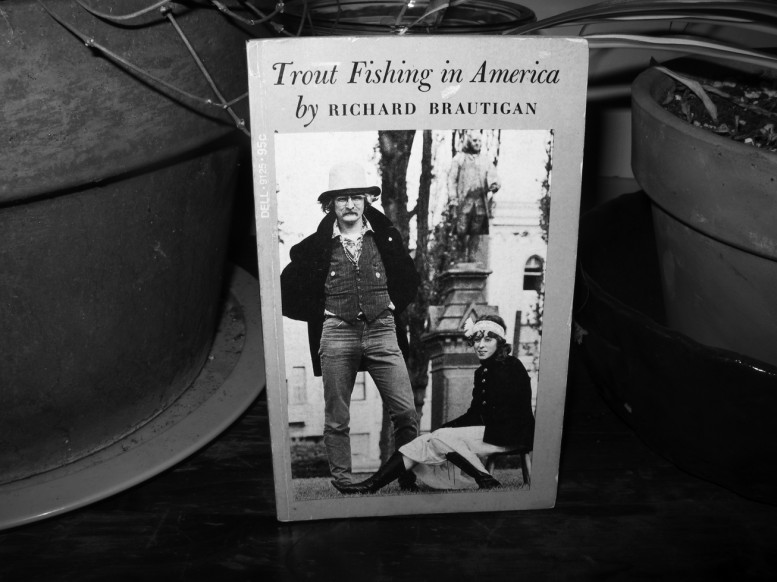
Trout Fishing in America is not at all about trout fishing. Trout fishing is merely an ambiguous metaphor. The cover of the book is a photograph of Richard Brautigan and a friend identified as Michaela Le Grand, whom he referred to as his "Muse." The photo was taken in San Francisco's Washington Square Park in front of the Benjamin Franklin statue. The first chapter of the book is an extended and fanciful description of this photo. Richard Brautigan was a seminal figure in 196os literature. He died of a self-inflicted .44 Magnum gunshot wound to the head. He left a suicide note that simply read: "Messy, isn't it?"
[NOVELS] A Wild Surge of Guilty Passion
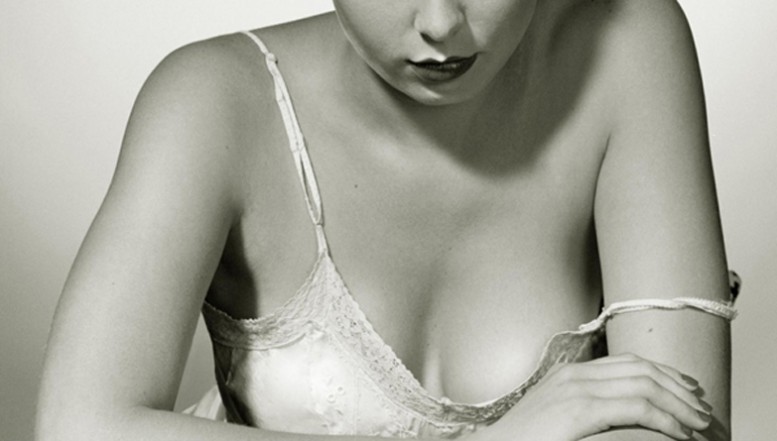
"Based on a real case whose lurid details scandalized Americans in 1927 and sold millions of newspapers, acclaimed novelist Ron Hansen's latest work is a tour de force of erotic tension and looming violence. Trapped in a loveless marriage, Ruth Snyder is a voluptuous, reckless, and altogether irresistible woman who wishes not only to escape her husband but that he die—and the sooner the better. No less miserable in his own tedious marriage is Judd Gray, a dapper corset-and-brassiere salesman who travels the Northeast peddling his wares. He meets Ruth in a Manhattan diner, and soon they are conducting a white-hot affair involving hotel rooms, secret letters, clandestine travels, and above all, Ruth's increasing insistence that Judd kill her husband. Could he do it? Would he? What follows is a thrilling exposition of a murder plan, a police investigation, the lovers' attempt to escape prosecution, and a final reckoning for both of them that lays bare the horror and sorrow of what they have done. Dazzlingly well-written and artfully constructed, this impossible-to-put-down story marks the return of an American master known for his elegant and vivid novels that cut cleanly to the essence of the human heart, always and at once mysterious and filled with desire." More...
Ed Ruscha: On the Road
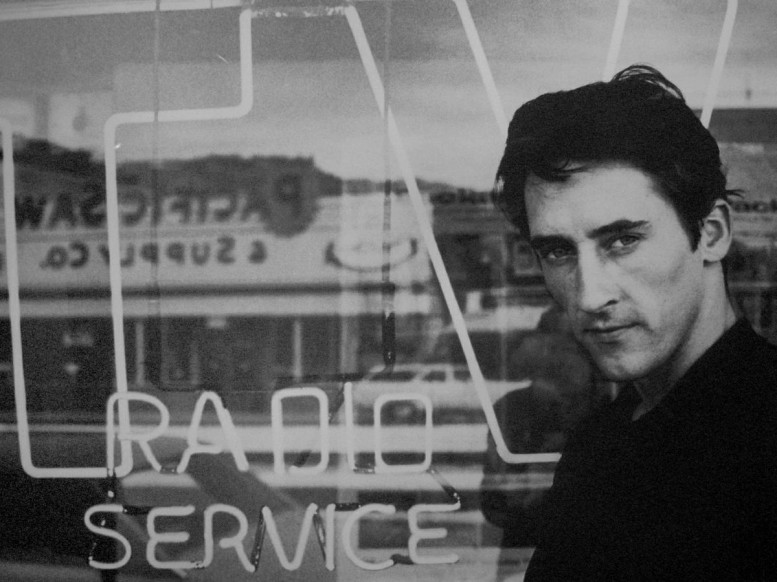 Ed Ruscha photographed by Dennis Hopper
Ed Ruscha photographed by Dennis Hopper
In 1951, Kerouac wrote On the Road on his typewriter as a continuous 120 foot-long scroll, feverishly recording in twenty days his experiences during road trips in the U.S. and Mexico in the late 1940s. With its publication in 1957, Kerouac was acknowledged as the leading voice of the Beat Generation, a group of writers that included Alan Ginsberg and William Burroughs. Over the last few years Ed Ruscha has continued to explore his own fascination with the shifting emblems of American life by turning his keen aesthetic sensibility to Kerouac’s classic novel. Having created his own limited edition artist book version of On the Road in 2009 published by Gagosian Gallery and Steidl, and illustrated with photographs that he took, commissioned, or found, Ruscha has created an entirely new body of paintings and drawings that take their inspiration from passages in Kerouac’s novel. Opening today at the Hammer Museum in Los Angeles an exhibition entitled Ed Ruscha: On the Road includes Ruscha’s edition of Kerouac’s legendary novel, six large paintings on canvas, and ten drawings on museum board, each taking its text from On the Road. www.hammer.ucla.edu
Benjamin Péret's Leg of Lamb
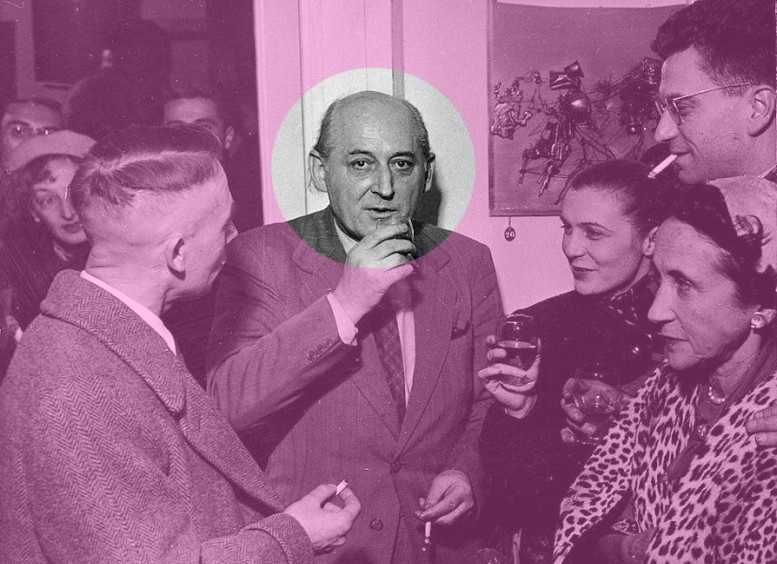
Benjamin Péret was a founding member of surrealism, a card carrying surrealist - if there ever was such a thing - and he was Salvador Dali's favorite poet; as well as a revolutionary and a rabble rouser who stirred the pot of literary movements as well as political ones. Péret, like his writing, led an almost automatic life. Entering world war one in order to avoid persecution for defacing a statue and whilst in a fox hole one day he discovers the writings of Dadaist Guillaume Apollinaire - a Dadaist poet who coined the word surrealism. After the war Péret found his way in to the heart of the burgeoning surrealist movement and subsequently into the heart of its founder Andre Breton. The surrealists found it best to stay close in the early years of its founding in order to protect their brilliant, insane, and sometimes infantile visions of the world - a vision that if proclaimed by a solitary person would most likely lead to confinement for insanity in a world that saw if perfectly fine without all the sliced eyeballs and flying tigers.
“...a smorgasbord of automatic writing.”
But Benjamin Péret was one of the only surrealists, beside Andre Breton, who stayed a surrealist even after the mirage wore off. Péret's Leg of Lamb: Its Life and Works, which is available now on Wakefield Press, is a "foundational classic of Surrealist literature." Almost entirely written in the 1920s, Leg of Lamb is a collection of brilliant, absurdist visions - twenty-four narratives in short prose - a "smorgasbord of automatic writing." Visit the the Wakfield Press website and pick up a copy for your collection - its a must for your library. www.wakefieldpress.com
Henry Miller's Last Residence on Earth
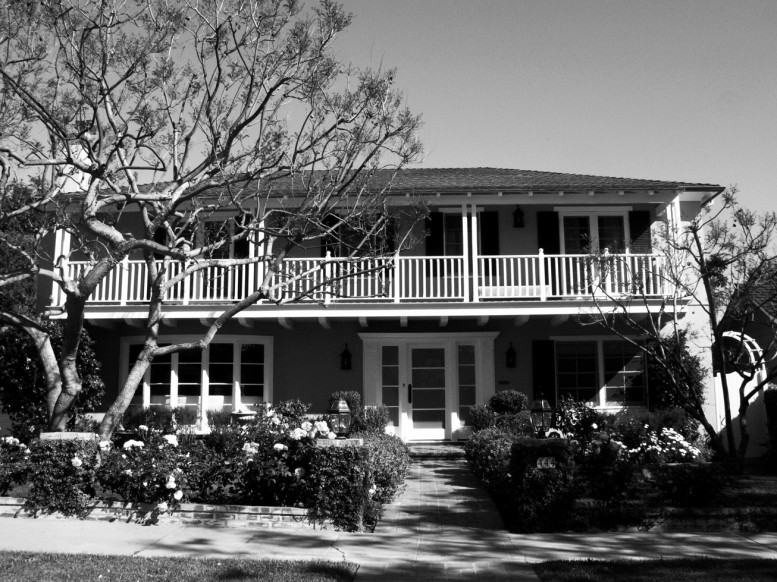 Pacific Palisades, California, photography by Oliver Maxwell Kupper
Pacific Palisades, California, photography by Oliver Maxwell Kupper
"The frantic desire to Live, to live at any cost, is not a result of the life rhythm in us, but of the death rhythm." Henry Miller
Walter Benjamin: A Reflection in Pictures

Architecture and art have played a particular part for Walter Benjamin, because the relation of the past to the present was not of a temporal but of a figurative nature for him. Thus, according to his conception, the past could converge with the present via a flashlike image to form a ‘constellation’ and produce a ‘profane enlightenment’. Just like a configuration can be seen in the bright spots of a starry sky, interpreted as an astronomical constellation, the past is captured in a ‘dialectical picture in a standstill’. The conceptual arguments are only the ‘reverberating thunder’. Not only works of the visual arts, like Paul Klee’s water colour ‘Angelus Novus’, but in particular buildings and cities provided such dialectical images for him, as a ‘past become space’, for instance with arcades, panoramas or interiors, which made him see through the dreams, ideals and phantasms of a collective. An exhibition at the Architekturmuseum in Munich, entitled Walter Benjamin: A Reflection in Pictures, explores Benjamin's complex relationship with architecture. On view until June 19. www.architekturmuseum.de
My Blue Love: Edith Piaf's Love Letters to Louis Gérardin
"My blue love, our first separation ... darling, I think I can say that never has a man taken me as much, and I believe I'm making love for the first time." Edith Piaf's "blue love" was a 13-time French speed racing champion bicyclist named Louis Gérardin. The letters were written in 1951 and 1952 during a feaverish, little known, love affair – shortly after her true love, the boxer Marcel Cerdan, died tragically in a plane crash. The letters are intimate, full of sexual ravings and pleas for Gérardin to leave his wife. Before Gérardin could leave his wife Piaf had already married another man. In 2009, 54 of the letters were sold at Christies in Paris for 59,000 euros. The letters will now will be published in the book entitled My Blue Love – out on April 30 in France.
[LEGENDS] Nomad, Poet, 20th Century Prophet of the Wild West

In 1934, at the age of 20, poet and nomadic wanderer Everette Reuss travelled into the red rock canyon lands of Southern Utah with two burros and vanished without a trace. In 2009 his apparent remains were found, but upon further analysis were called into question as to their authenticity. What happened to Everette Reuss? Some say he was murdered by natives for his burros, some say he simply drowned or fell off one of the many jagged cliffs, and some legends recount that Everette Reuss fell in love with a Navajo woman and ran away with her tribe. The life, disappearance and legend of Everette Reuss has been an enduring mystery, an American saga exemplar to our own imaginings of the great adventure. A new book, Everett Ruess: His Short Life, Mysterious Death, and Astonishing Afterlife, due out this summer on University of California Press examines the life and legend; going "...beyond the myth to reveal a troubled, idealistic adolescent who flirted with death and lost." www.ucpress.edu
Fear & Loathing in San Juan: The Rum Diaries
Its a tale all too Hunter Stockton Thompson. In 1958 he completed his first novel, The Rum Diary - he was in his late 20s. Letters around this time, Hunter Thompson was a voracious letter writer - he kept a carbon copy of almost every letter he ever wrote since his teens and lasted until his suicide at 67 as some kind of obsessive, seemingly feverish, prophetic preservation of his legacy, before and after completion of the Rum Diary, paint a Hunter Thompson excited about finishing his first, real novel - after hopscotching from one one horse town newspaper to the next throughout much of his early journalistic career. But letters also show the harsh side of rejection and many letters to the effect from editors, as well as replies back from Thompson with belligerent threats of murder, revenge and spilled teeth. The Rum Diary tells the tale of a young American journalist disillusioned by a hopelessly bland America under Eisenhower who moves to a pristine San Juan, Puerto Rico to work for a flailing newspaper and becomes obsessed with a young blonde fiancee of a cohort. Its a tale all to Hunter Thomson: reportage of the strange world from behind the bullet proof glass of his own conciousness, a consciousness too big in a world that at same time made him feel so small. Rum soaked and covered in white tropical sand, The Rum Diary is a tale of bliss and abandon from a young writer finding his voice at the apex of an entirely American 20th century, groping madly for the American dream up the fuzzy blouse of some young, dumb secretary. The Rum Diary wasn't published until 1998, nearly 50 years after it was completed. This October, a film, entitled The Rum Diary, will bring this incredible book to to the silver screen.
[Lost Generation] Voyager avec Annemarie Scharzenbach
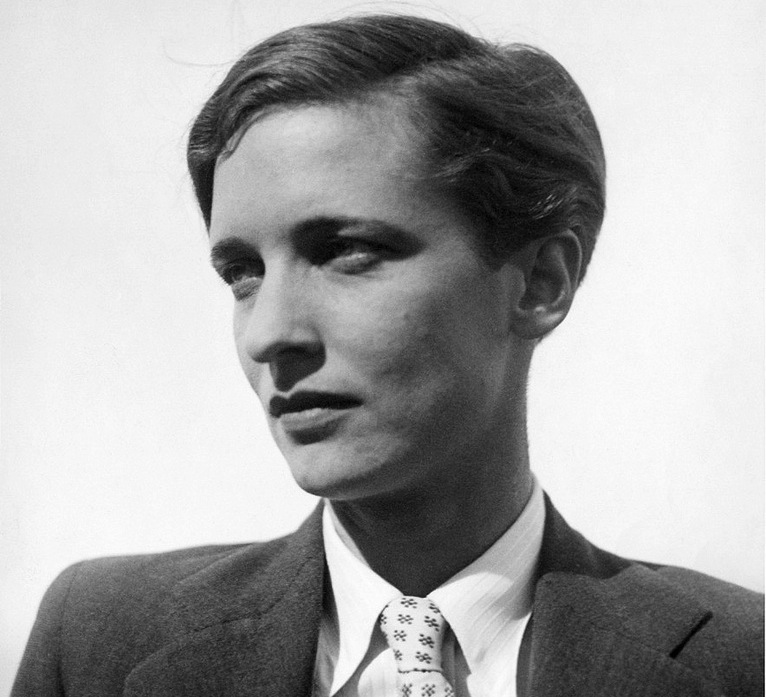 An overview of the work of traveler, journalist, writer, photographer, Annemarie Scharzenbach, is set to be released as a collaboration publication with the French journal La Quinzaine Littéraire and Louis Vuitton. Annemarie, born in Switzerland in 1908, was an icon of the Lost Generation and the live fast die young ethos of the Weimar Republic, an interwar era of morphine and fast cars. Voyager avec Annemarie Scharzenbach - La Quête du réel is the first in depth look at her work, accompanied by about forty photographs taken by Annemarie herself. The book is set to be released in May. www.quintzaine-litteraire.presse.fr
An overview of the work of traveler, journalist, writer, photographer, Annemarie Scharzenbach, is set to be released as a collaboration publication with the French journal La Quinzaine Littéraire and Louis Vuitton. Annemarie, born in Switzerland in 1908, was an icon of the Lost Generation and the live fast die young ethos of the Weimar Republic, an interwar era of morphine and fast cars. Voyager avec Annemarie Scharzenbach - La Quête du réel is the first in depth look at her work, accompanied by about forty photographs taken by Annemarie herself. The book is set to be released in May. www.quintzaine-litteraire.presse.fr
